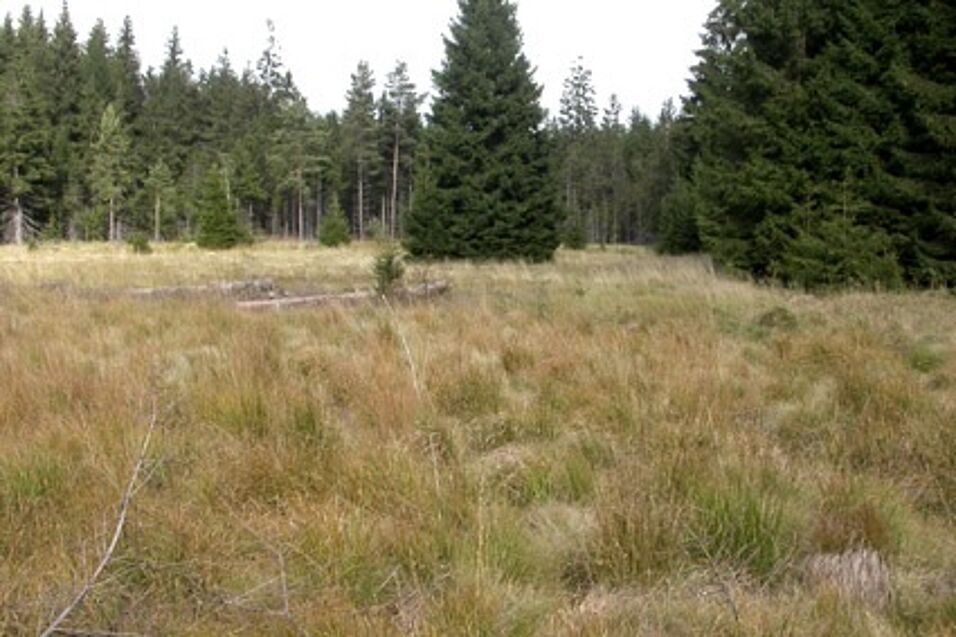How wetland microorganisms will respond to global warming and increasing aerial sulfur pollution in the upcoming decades to centuries is one of the largest unknowns. Although regarded primarily as methanogenic environments, a hidden sulfur cycle exerts important ecosystem functions in wetlands. Dissimilatory sulfate reduction is thermodynamically favorable relative to methanogenic processes and often occurs in wetlands at rates comparable to marine surface sediments, despite significantly lower sulfate concentrations. The underlying interspecies resource competition effectively controls gross production of methane in wetlands. Sulfur-cycling microorganisms thus have an important but undervalued role in organic matter degradation and in controlling methane emissions from wetlands.
Our previous work demonstrated that rare Desulfosporosinus species have the potential to substantially contribute to sulfate reduction in an acidic peatland and has revealed that members of the phylum Acidobacteria have a sulfur-based eneregy metabolism. To further our understanding of sulfate reducer ecophysiology in peatlands, anoxic microcosms were supplemented with typical degradation intermediates of organic matter at in situ concentrations and incubated under methanogenic or sulfate-reducing conditions. Highly parallel 16S rRNA gene and cDNA amplicon sequencing, quantitative real-time PCR, and metatranscriptomics were used to analyze microbial community dynamics, interactions, and activities. In addition, we have reconstructed and analyzed the genomes of wetland microorganisms, such as the rare Desulfosporosinus, by metagenomics of native soil and active microbes as enriched by DNA stable isotope probing and single cell genomics.
While a our studies provided first insights into the identity and ecological role of sulfate-reducing bacteria, microorganisms involved in the various individual steps of sulfur cycling in wetlands are under-characterized. It is also largely unknown how cycles of the various elements in the wetlands are connected through interacting microbial metabolisms, both within and between species. Our current project thus aims at establishing the first comprehensive overview of the sulfur microbiome in wetlands. Selected research questions that will be addressed are: What is the identity and ecophysiology of microorganisms that reduce or oxidize sulfur compounds of intermediate oxidation states, e.g. sulfite, thiosulfate, tetrathionate, elemental sulfur, for energy generation? What is the physiological interplay between generalists that utilize diverse sulfur compounds of various oxidation states and specialists that utilize only selected sulfur compounds? How is sulfur metabolism in wetland microorganisms linked to complementary utilization of compounds of other element cycles such as carbon, nitrogen, and iron?
We will draw on available metagenome, metatranscriptome, and supporting biogeochemical data from diverse native wetlands or wetland experiments to establish a genome collection of uncultured sulfur-cycling microorganisms and reveal their putative physiological functions and interspecies interactions. Genome-based physiological predictions will be evaluated through monitoring microbial activities in a series of defined soil microcosm experiments by molecular biology, stable isotope probing, and biogeochemical techniques. The combination of modern genome-centric and strain-level Omics approaches with experiments designed to test specific metabolic hypotheses will lead to a better understanding of the identity and distribution of sulfur-cycling microorganisms and the physiological mechanisms that allow them to provide central ecosystem services in the different wetlands.
This research is/was funded by the Austrian Science Fund (FWF) P31996, P23117, and P18836 and by sequencing grants from the Joint Genome Institute (JGI) Proposal IDs 257 and 605
Investigated by:



